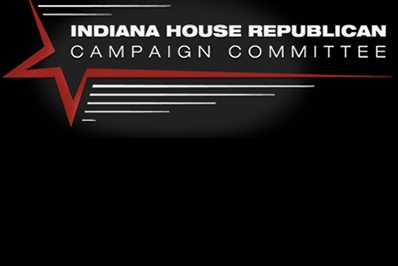By John Pickerill
The Indiana General Assembly opened its session in January. It’s now the fifth straight year Republicans have a Democrat-proof super-majority in both House and Senate. You’d think by now they would’ve enacted into law every bit of the Republican platform core beliefs (limited government, federalism, freedom from government interference, the sanctity of life, second amendment, fiscal responsibility). Plenty of bills were introduced supporting these beliefs, but few ever saw the light of day. Instead, we got spending increases and new government programs. And this year House Speaker Brian Bosma is proposing a tax increase. What happened?

To answer that question, you need to know how a bill really becomes a law. I don’t mean the School House Rock “I’m Just a Bill” version. I’m talking the follow-the-money version. And at its center is the House Republican Campaign Committee. The HRCC is the most powerful organization in Indiana politics. Most House GOP legislators have surrendered control of their election campaign – fundraising, planning, spending – to HRCC with the promise that HRCC (and political consultant Mark It Red) will protect incumbent Republicans if they face a challenger in the next election. And that’s how they keep getting re-elected. Today when a legislator gets campaign donations you can bet they turn over the lion’s share to HRCC, often $10,000 or more at a time. HRCC brought in over $2.3 million in 2016 alone. And this gives its chairman, Brian Bosma, incredible leverage.
Bosma already has a huge influence as Speaker. He alone decides which bill is assigned to which committee. He alone appoints every member of those committees including chairmen. In turn, a committee chairman has absolute power to decide if a bill gets a hearing or dies in committee. It’s probably no coincidence that most chairmen make huge donations to Bosma’s HRCC. In the end, a bill is passed because Mr. Bosma wants it to because it was just easier for the other Republicans to go-along-to-get-along and not risk their HRCC protection money for the next election. And loyalty could mean a chairmanship one day. Bucking the system could mean losing a chairmanship, no campaign funding, and (gasp!) losing the next election. Principle quickly takes a back seat to staying in office.
So what influences Bosma and his legislative agenda each year? If campaign finance reports are any indication, it’s the political action committees and those who fund him. In the last four years, his personal campaign accepted $2.2 million, his biggest contributors being Indiana Merit Construction PAC, Indiana Multi-Family Housing PAC, Zink Properties LLC, Build Indiana PAC, and billionaire Dean White also plopped down $500,000. But because committee chairmen are bringing in so much money to HRCC, Bosma is influenced by their donors as well. And it should come as no surprise that Build Indiana PAC (lobbying for road construction companies) made big donations to most of his committee chairmen, most notably Ed Soliday (Roads & Transportation) and Tim Brown (Ways & Means) who each got $12,000. People looking to buy influence know who has influence. Bosma, Brown, and Soliday received more campaign contributions than anyone in the House in 2016 (Jan-Oct). How does a bill become law? PACs give Bosma his marching orders, and Bosma (with his HRCC carrot) gives legislators theirs. HRCC kills deliberation.
No one will really understand politics until they understand that politicians are not trying to solve our problems. They are trying to solve their own problems – of which getting elected and re-elected are No. 1 and No. 2. Whatever is No. 3 is far behind. – Thomas Sowell

